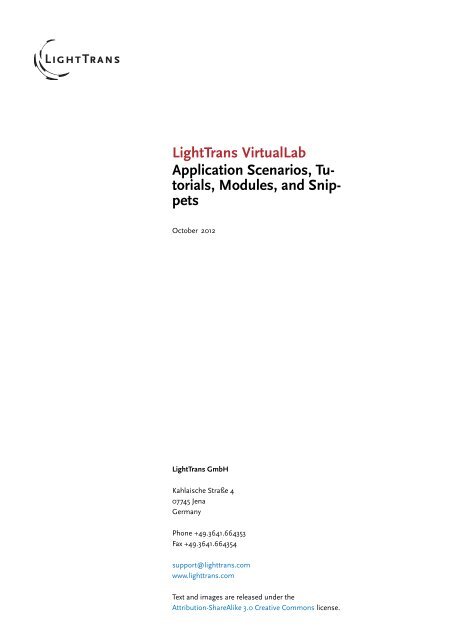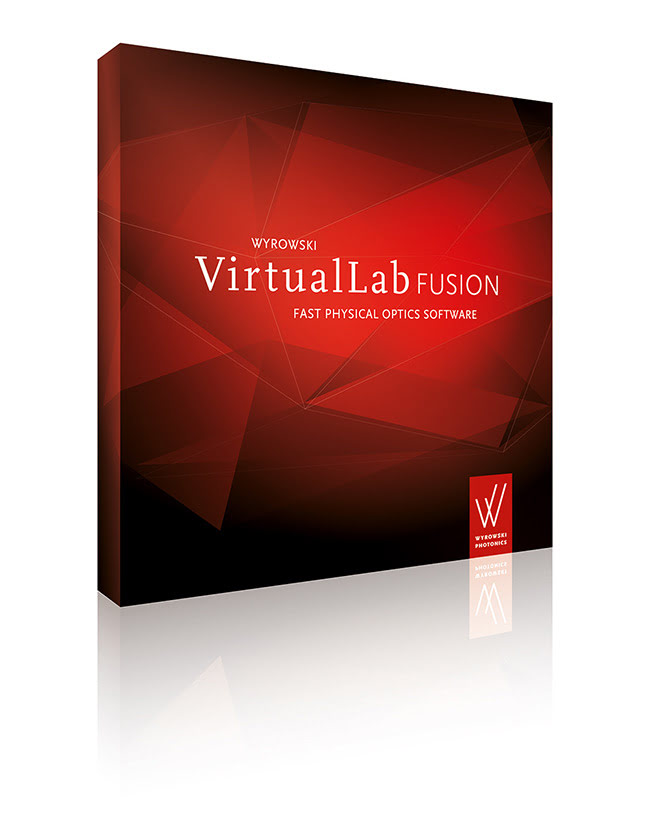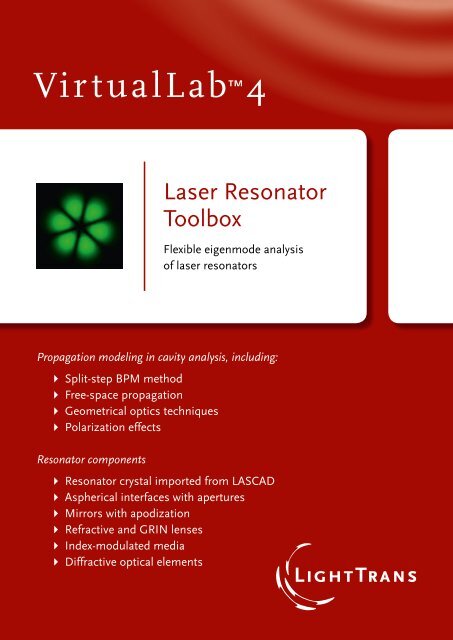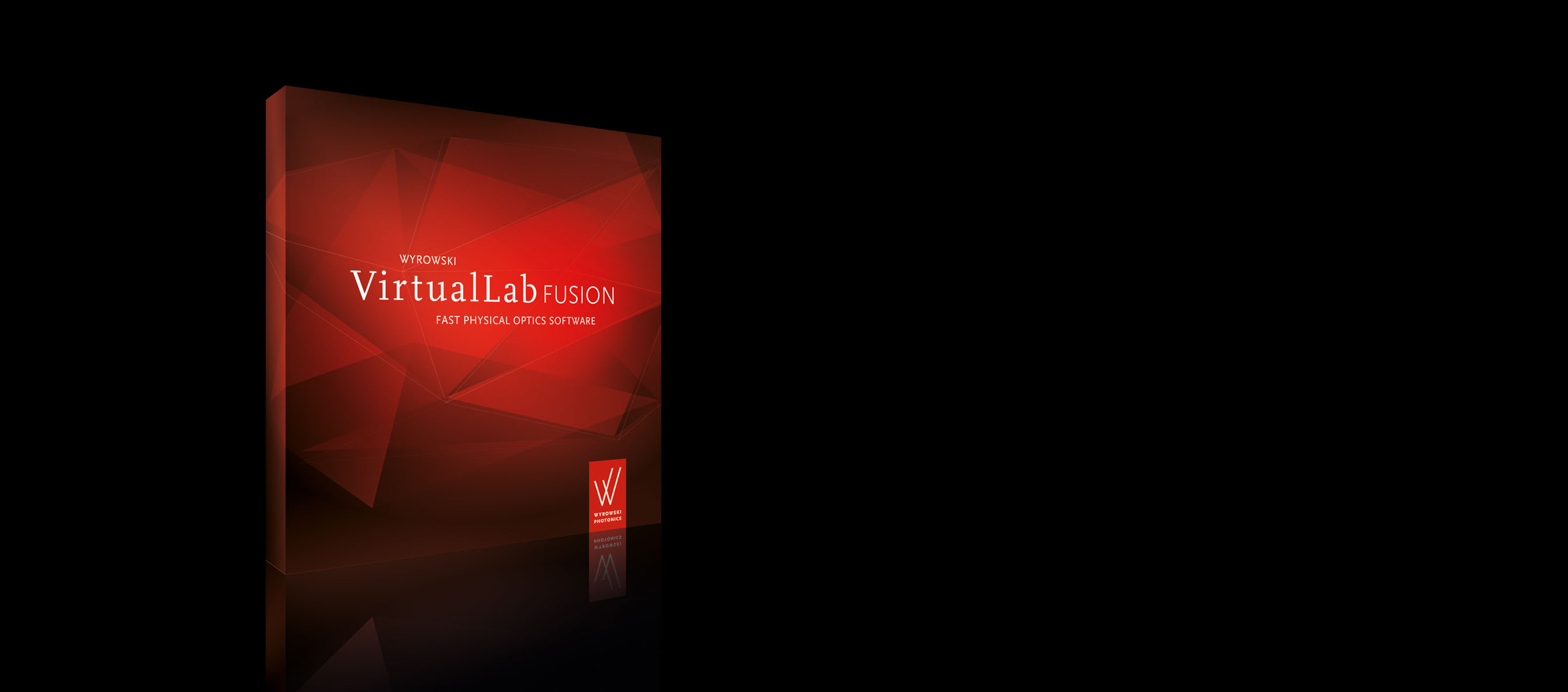LIGHTTRANS VIRTUALLAB DOWNLOAD FREE
Fast propagation of electromagnetic fields in graded-index media. The setup and the simulation of optical systems will be illustrated on various laser systems. Per grating region several parameters can be defined. Based on the concept of fast physical optics, we develop a theory to efficiently propagate the field in GRIN media, including the effect of polarization cross-talk. Master the possibilities of VirtualLab Fusion with training sessions from our experts. Using the Programmable Interface in VirtualLab Fusion, an anamorphic surface is programmed and especially with the surface gradient analytically given. Coupling of Parameters in VirtualLab Fusion. 
| Uploader: | Darr |
| Date Added: | 18 March 2012 |
| File Size: | 26.85 Mb |
| Operating Systems: | Windows NT/2000/XP/2003/2003/7/8/10 MacOS 10/X |
| Downloads: | 19959 |
| Price: | Free* [*Free Regsitration Required] |
Fast-physical optics modeling of lighhttrans microscopy with 3D-structured illumination. Programming an Anamorphic Surface. Python, with VirtualLab Fusion generating the physical-optics results in the background. Programmable Component for Free-Space Propagation. Fourier modal method FMM is applied for the rigorous evaluation of non-paraxial diffractive beam splitters, which are initially designed by using IFTA and thin-element approximation.

Pulse Broadening in Dispersive Media. Instead of using local gratings, as is the case with diffractive lenses, in metalenses nanostructures are virrtuallab to control the local effects. Import of Zemax Beam Files.
With the Electromagnetic Field Detector the user can access the fully vectorial electromagnetic field at any given plane in the system. Grating Stretcher for Lighttrasn Pulses. The growing importance of diffractive and meta-lenses in modern optical systems makes it vital to investigate and understand their capabilities.
In this talk we present the theory of the semi-analytical FFT alongside several examples to demonstrate the great potential of this approach. When SLMs are often employed as programmable diffractive optical elements, the influence from the pixel gaps on the system performance is investigated.
High-power laser diodes often exhibit asymmetric divergence and astigmatism.
Introduction to VirtualLab Fusion
In this use case we show you how to program a module to compute the standard deviation between two fields. Programming a Double Pinhole Transmission Function.

Programming a Scanning Parameter Run. In high-NA focusing situations, e. Gauging the accuracy of a given result is fundamental in science and engineering. A diffractive or meta-lens can be modeled as local structures e. White Paper PDF pdf VirtualLab Fusion supports light shapping by freeform surfaces, diffractive beam splitters and pattern generators, diffusers, and general arrays of micro-optical components, including, but not limited to, micro-lens arrays.
This example shows how to use Lihgttrans Pulse Spectrum to virtullab a chirped Gaussian pulse, with the pulse specification given in time domain.
VirtualLab Fusion: Optical Design Software from LightTrans
Polarization Conversion in Uniaxial Crystals. Programming a Degree of Coherence Detector.

By placing a rotated rectangular aperture behind input fields with different sizes, the PSF and MTF in the focal plane are investigated. Construction of a Truncated Pyramid Surface. In this work, we present the connection of the two specific solvers mentioned above lightfrans the context of a field-tracing approach. This information will be used only by LightTrans International and its local distributors.
In this programming example we illustrate virtiallab to code a transmission function that imitates an opaque screen punctured by two round holes. Please review our privacy policy for further information on user data handling. With the Mie solution for an electromagnetic plane wave in VirtualLab Fusion, we investigate ljghttrans scattering effect of spherical particles with different radii and made of different materials.
In this document you may find an overview of the detectors which are readily available in VirtualLab Fusion. In VirtualLab Fusion, users can easily construct a two-mirror laser resonator, and use parametric optimization to design this resonator to generate a desired output mode.
This use case shows how to specify arbitrary effects to equidistant or non-equidistant field data as an optical component within optical systems. A very typical detector within VirtualLab Fusion is the camera detector which generates a chromatic fields set.

Комментарии
Отправить комментарий